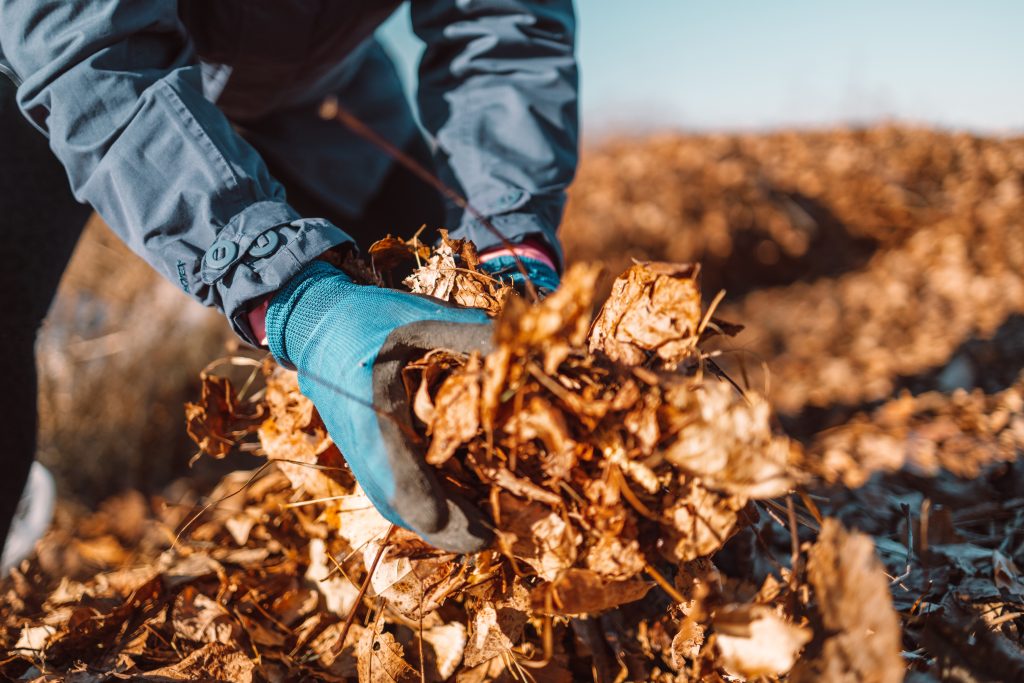Garden clean-up is an important, if tedious task. Proper end-of-season care will help minimize the spread of disease and can keep weeds down over the winter. It will also help your perennial plants survive the winter and make your yard look neater.
It might help make things easier if you focus on removing all non-plant material from the garden areas first. Things like plant labels, supports, forgotten tools, etc. Clean and store everything.
■ Next, pull up all spent plant material. Winter squash may still be ripening, you don’t want to pull them prematurely if possible. Compost anything that is not diseased and burn or dispose of the rest. (Frost-killed plants are safe to compost.) Watch out for plants that have gone to seed though – if you don’t have a hot compost pile, many will sprout.
■ If you need to lime your soil, now is the best time to do it. You can also add compost or other organic materials at this time, including fresh manure. It is not necessary to work the materials into the soil, if you wish to do so, work only into the top few inches.
A thick layer of mulch over the now-bare soil can help keep the weeds down over the winter. On the flip side, though, mulch keeps the soil cooler and slows drying, so you may want to remove organic mulches about a month before planting.
■ If you grew potatoes this year, dig them up now. Brush dirt off – wash only if muddy, let dry completely before storing. Store only healthy, undamaged ones. Keep in a cool, dark place, with high humidity.
■ Cut and store winter squash if frost is predicted, or when temperatures fall below 50 degrees for more than a week. Squash must be completely ripe for storage. Stems should be brown and you should not be able to pierce the skin with a fingernail.
Condition before storing by holding them at around 80 degrees for a week before placing them in a cooler spot – preferably 50-55o degrees, with moderate humidity. Preserve unripe squash by freezing or canning. (https://catalog.extension.oregonstate.edu/ec1632)
■ Pick green tomatoes when frost is forecast, and let ripen indoors (sunlight not necessary). Green tomatoes can also be preserved in many ways. (catalog.extension.oregonstate.edu/pnw300)
■Clean and bleach any pots and planters used this year to avoid spreading disease to new plants next spring. Bring all garden tools into your garage or shed. Clean, oil and sharpen tools.
■ In the flower beds, remove dead annuals, harvest and save seeds of your favorites. Clear out any old mulch to keep over-wintering pests out of the garden. Replace with compost or manure to feed soil.
■ Cut perennials back to about 6-8” above ground level. If plants are getting too large for the area, dig up and divide now. Mulch soil after ground freezes to prevent heaving during freeze/thaw cycles.
■ Dig and store tender bulbs such as dahlias and gladiolas after the first frost. Dig and store geraniums. Take cuttings if desired.

Don’t bag those leaves!
Leaves make great compost, either by themselves or mixed in a compost pile. They will work best if you can run them over with a lawn mower before using. Save work by running them over where they lie. Go over your lawn with your mower set on high and your grass catcher attached. Then you can easily transport the shredded leaves to wherever you will be using them.






